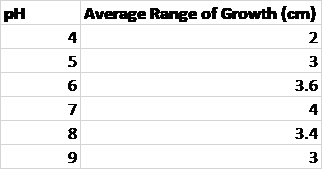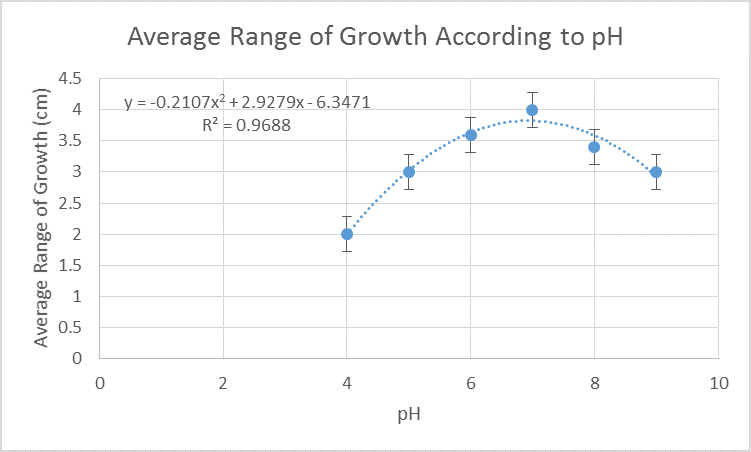 All papers examples
All papers examples
Disciplines

- MLA
- APA
- Master's
- Undergraduate
- High School
- PhD
- Harvard
- Biology
- Art
- Drama
- Movies
- Theatre
- Painting
- Music
- Architecture
- Dance
- Design
- History
- American History
- Asian History
- Literature
- Antique Literature
- American Literature
- Asian Literature
- Classic English Literature
- World Literature
- Creative Writing
- English
- Linguistics
- Law
- Criminal Justice
- Legal Issues
- Ethics
- Philosophy
- Religion
- Theology
- Anthropology
- Archaeology
- Economics
- Tourism
- Political Science
- World Affairs
- Psychology
- Sociology
- African-American Studies
- East European Studies
- Latin-American Studies
- Native-American Studies
- West European Studies
- Family and Consumer Science
- Social Issues
- Women and Gender Studies
- Social Work
- Natural Sciences
- Anatomy
- Zoology
- Ecology
- Chemistry
- Pharmacology
- Earth science
- Geography
- Geology
- Astronomy
- Physics
- Agriculture
- Agricultural Studies
- Computer Science
- Internet
- IT Management
- Web Design
- Mathematics
- Business
- Accounting
- Finance
- Investments
- Logistics
- Trade
- Management
- Marketing
- Engineering and Technology
- Engineering
- Technology
- Aeronautics
- Aviation
- Medicine and Health
- Alternative Medicine
- Healthcare
- Nursing
- Nutrition
- Communications and Media
- Advertising
- Communication Strategies
- Journalism
- Public Relations
- Education
- Educational Theories
- Pedagogy
- Teacher's Career
- Statistics
- Chicago/Turabian
- Nature
- Company Analysis
- Sport
- Paintings
- E-commerce
- Holocaust
- Education Theories
- Fashion
- Shakespeare
- Canadian Studies
- Science
- Food Safety
- Relation of Global Warming and Extreme Weather Condition
Paper Types

- Movie Review
- Essay
- Admission Essay
- Annotated Bibliography
- Application Essay
- Article Critique
- Article Review
- Article Writing
- Assessment
- Book Review
- Business Plan
- Business Proposal
- Capstone Project
- Case Study
- Coursework
- Cover Letter
- Creative Essay
- Dissertation
- Dissertation - Abstract
- Dissertation - Conclusion
- Dissertation - Discussion
- Dissertation - Hypothesis
- Dissertation - Introduction
- Dissertation - Literature
- Dissertation - Methodology
- Dissertation - Results
- GCSE Coursework
- Grant Proposal
- Admission Essay
- Annotated Bibliography
- Application Essay
- Article
- Article Critique
- Article Review
- Article Writing
- Assessment
- Book Review
- Business Plan
- Business Proposal
- Capstone Project
- Case Study
- Coursework
- Cover Letter
- Creative Essay
- Dissertation
- Dissertation - Abstract
- Dissertation - Conclusion
- Dissertation - Discussion
- Dissertation - Hypothesis
- Dissertation - Introduction
- Dissertation - Literature
- Dissertation - Methodology
- Dissertation - Results
- Essay
- GCSE Coursework
- Grant Proposal
- Interview
- Lab Report
- Literature Review
- Marketing Plan
- Math Problem
- Movie Analysis
- Movie Review
- Multiple Choice Quiz
- Online Quiz
- Outline
- Personal Statement
- Poem
- Power Point Presentation
- Power Point Presentation With Speaker Notes
- Questionnaire
- Quiz
- Reaction Paper
- Research Paper
- Research Proposal
- Resume
- Speech
- Statistics problem
- SWOT analysis
- Term Paper
- Thesis Paper
- Accounting
- Advertising
- Aeronautics
- African-American Studies
- Agricultural Studies
- Agriculture
- Alternative Medicine
- American History
- American Literature
- Anatomy
- Anthropology
- Antique Literature
- APA
- Archaeology
- Architecture
- Art
- Asian History
- Asian Literature
- Astronomy
- Aviation
- Biology
- Business
- Canadian Studies
- Chemistry
- Chicago/Turabian
- Classic English Literature
- Communication Strategies
- Communications and Media
- Company Analysis
- Computer Science
- Creative Writing
- Criminal Justice
- Dance
- Design
- Drama
- E-commerce
- Earth science
- East European Studies
- Ecology
- Economics
- Education
- Education Theories
- Educational Theories
- Engineering
- Engineering and Technology
- English
- Ethics
- Family and Consumer Science
- Fashion
- Finance
- Food Safety
- Geography
- Geology
- Harvard
- Healthcare
- High School
- History
- Holocaust
- Internet
- Investments
- IT Management
- Journalism
- Latin-American Studies
- Law
- Legal Issues
- Linguistics
- Literature
- Logistics
- Management
- Marketing
- Master's
- Mathematics
- Medicine and Health
- MLA
- Movies
- Music
- Native-American Studies
- Natural Sciences
- Nature
- Nursing
- Nutrition
- Painting
- Paintings
- Pedagogy
- Pharmacology
- PhD
- Philosophy
- Physics
- Political Science
- Psychology
- Public Relations
- Relation of Global Warming and Extreme Weather Condition
- Religion
- Science
- Shakespeare
- Social Issues
- Social Work
- Sociology
- Sport
- Statistics
- Teacher's Career
- Technology
- Theatre
- Theology
- Tourism
- Trade
- Undergraduate
- Web Design
- West European Studies
- Women and Gender Studies
- World Affairs
- World Literature
- Zoology
The Influence of Water PH on Plant Growth, Lab Report Example
Hire a Writer for Custom Lab Report
Use 10% Off Discount: "custom10" in 1 Click 👇
You are free to use it as an inspiration or a source for your own work.

Research Question
How does the pH of water influence the growth of Chlorophytum comosum? To determine the influence of water pH on plant growth, Chlorophytum comosum will be exposed to several different pH values.
Background Information
Chlorophytum comosum, commonly known as the spider plant, is a common household item. The plant is characterized by long yellow-green leaves and the frequent production of seeds in capsule form. Even though the plant survives well indoors, it is native to tropical and Southern Africa (Hickey et al., 2001). As a consequence, it is clear that the plant grows well in response to a water pH of 6.5 to 7.5, as this is the pH range that typically represents tap water. Many botanists believe than an ideal water pH for plants is 7 because this is an indicator of neutrality. However, some plants are capable of adapting to extreme environments. Plants that are native to Hawaii, such as the pineapple and sugarcane, are able to tolerate low social pH (Silva et al., 2000). Since Chlorophytum comosum is a tropical plant is well, it is plausible that this plant has the same ability to tolerate pH.
Research has shown that the pH of a plants environment is linked to photosynthesis and this is a potential explanation for a plant’s ability to grow in an extreme environment (Heber et al., 1976). Therefore, it is possible that a plant’s ability to tolerate extreme environments is linked to the ability of its photosynthetic machinery to protect against denaturation as a consequence of low pH exposure. Elucidating the relationship between water pH and growth of Chlorophytum comosum would help farmers around the world determine if low pH soil could provide benefit to crop growth. As an example, low pH soil would prevent the growth of many weeds but permit growth of acid-tolerant plants. In addition, knowledge of this relationship will help household plant enthusiasts identify whether there need to monitor water acidity to ensure healthy plant growth.
Hypothesis
If Chlorophytum comosum treated with water with a pH of 5 is able to grow, the hypothesis that this plant is able to withstand low pH will be supported.
Variables
Independent Variable
The independent variable in this experiment is exposure to varying water pH.
Dependent Variable
The dependent variable in this experiment is plant growth.
Control Variable (Constant)
The control variable in this experiment in exposure to water with a pH of 7.
Control of Variables
All plants will be kept in the same window sill to ensure equal access to sunlight. In addition, all plants will be provided with the same quantity of water (10 mL) independent of pH. In all cases, growth will be determined by straightening the longest leaf and taking the measurement. Care will be taken to ensure that the starting length of the longest leaf is equivalent in all plants at the start of the experiment; this leaf will be labelled in all cases. All plants will be kept at room temperature and be transplanted into pots with the same soil source.
Materials
- Potting soil
- 30x clay pots
- 3x blooming spider plant
- Ruler (cm)
- 6x Beaker (50 mL)
- Distilled water
- HCl (1 M Solution)
- NaOH (1 M Solution)
- pH meter
- 2x Glass dropper
- Fertilizer
- 10 mL pipette
- Pipetteman
- Paperclip
Method
Seeds from the blooming spider plant were taken and transplanted into individual pots. Plants were allowed to grow for approximately two weeks to ensure adequate time for them to take root in the soil. During this initial growth process, plants were placed on window sills facing the same direction. Plants were watered three times a week and provided with fertilizer once per week. At the end of the two week period, all plants were examined to determine the longest leaf, which was marked with a paperclip for the remainder of the experiment.
Throughout the experimental phase, plants were watered with 10 mL of water three times per week. A 10 mL pipette was used to ensure exact measurement. Water solutions with pH’s ranging from 4 to 9 were made. To do so, 6 beakers were labelled to indicate the pH. Since this experiment was performed in quintuplicates, a total of 30 plants were used. 10 mL of distilled water was placed in each beaker, and addition of NaOH and HCl was used to bring each beaker of water to its final pH. During this process, a glass dropper was used to safely transfer NaOH solution to increase basicity or HCl solution to increase acidity. The pH of each solution was tracked and confirmed using a pH meter. Plant growth was tracked for approximately one month (30 days). Measurements were rounded to the nearest centimeter. Water solutions were remade as necessary.
The average range of plant growth for each pH value was calculated. Descriptive statistics were measured to determine the central tendency of this data. The correlation of water pH and average range of plant growth was then calculated using a Pearson correlation test. For the purpose of statistical testing, the spread of all data will be assumed normal. To confirm whether there is an association between water pH and average range of plant growth, a student’s t-test was performed; acidic pHs were compared to basic pHs. For all statistical tests, a p-value of 0.05 or less was considered statistically significant and all calculations will be performed using Microsoft Excel. Lastly, a percent change calculation was performed to determine the extent of the increase of the average range of plant growth according to pH. A percent change of greater than 5% was considered significant.
Data Collection and Processing
Raw Data
Table 1. Growth of the spider plants in acidic pH over a thirty day period

Table 2. Growth of the spider plants in neutral pH over a thirty day period

Table 3. Growth of the spider plants in basic pH over a thirty day period

Processed Data
Table 4. Average range of growth according to water pH

Table 4 describes the average range of growth (ARG) according to pH for the spider plants. The average ARG is 3.2 cm with a standard deviation of 0.62 cm. The mode ARG is 3 and the range is 2. The median ARG is 3.2. Since the mean and median are equal, this data set can be considered approximately normally distributed. The percent change of ARG according to pH was calculated to determine the difference in growth observed in the control (pH=7) to the plant with the poorest growth (pH=4). A 100% increase was found which, according to the defined parameters, is significant.
A t-test was performed to determine whether there is an association between the growth of the plants treated with basic water (pH>7) and the growth of the plants treated with acidic water. (pH<7) The p-value received for the test statistic was 0.56, indicating that there is no statistically significant difference between the growth observed in very basic and very acidic soil environments.
To determine the correlation between ARG and pH, the Pearson’s correlation coefficient was calculated. The results can be seen below in figure 1.

Figure 1. The relationship between ARG and pH
This graph was fitted with a polynomial trend line due to the pattern of events observed. Growth is lowest for the most basic and most acidic water environments tested and growth on both sides increases as a pH of 7 is achieved. The coefficient of determination is 0.97 and the Pearson’s correlation coefficient is 0.98. Thus, there is a strong positive increase in ARG as the pH increases to 7.
Conclusion and Evaluation
Conclusion
The results of this study support the hypothesis that Chlorophytum comosum is able to tolerate highly acidic environments. However, it was observed that the plant is able to tolerate basic environments as well. Despite the plant’s ability to tolerate growth in these pH ranges, it prefers a neutral pH. As the pH grew closer to 7, the ARG increased. Therefore, it is clear that pH impacts the plant’s metabolic activities. pH deactivates many key enzymes and proteins, which inhibits its ability to survive. Photosynthesis may be one of these processes due to its importance in ensuring plant survival.
Evaluation
A major limitation of this project was that it was not possible to explore the full range of pH. In addition to exploring the impact of ARG on the entire pH scale of 1 – 14, it would be valuable to examine growth trends more closely to a pH of seven by using pH increments of 0.5. In addition, the spider plant is a challenging organism to use for this type of study due to the presence of its many leaves. However, it was selected because compared to many other household plants, it grows quickly and is easy to maintain. If more time had been allowed for this project, it is likely that bamboo or a bonsai tree would have been chosen because growth can be more clearly measured.
Improvements
Several improvements can be made to the study. First of all, it would be helpful to use a larger sample size for each pH value examined. This would ensure that the recorded data has a greater ability to reflect the normal curve. In addition, it would be helpful to ensure the variables are controlled more tightly. One way to do this would be to remove the plants from natural sunlight and instead expose them to UV light so the exact amount of exposure could be fixed and recorded. Lastly, it would be useful to repeat this experiment on a variety of other plants to determine the pH environments they are capable of growing in. The results of this project would have useful implications in the field of agriculture.
References
Hickey M, King C. (2001). The Cambridge Illustrated Glossary of Botanical Terms. Cambridge University Press.
Silva JA, Uchida R. (2000). Plant Nutrient Management in Hawaii’s Soils, Approaches for Tropical and Subtropical Agriculture. Retrieved from http://www.plantphysiol.org/content/57/2/277

Stuck with your Lab Report?
Get in touch with one of our experts for instant help!
Tags:

Time is precious
don’t waste it!
writing help!


Plagiarism-free
guarantee

Privacy
guarantee

Secure
checkout

Money back
guarantee

